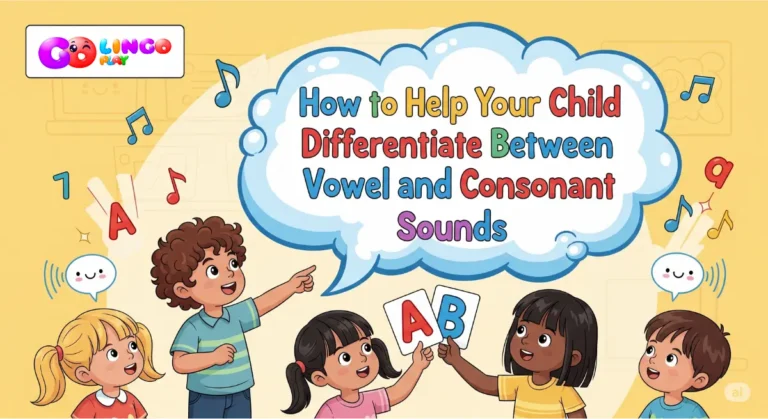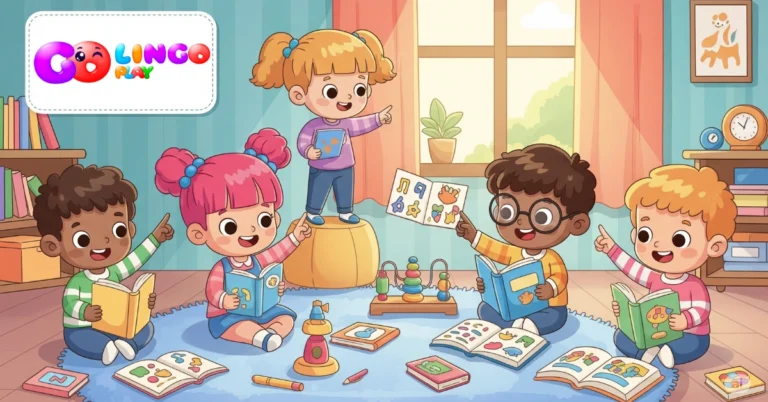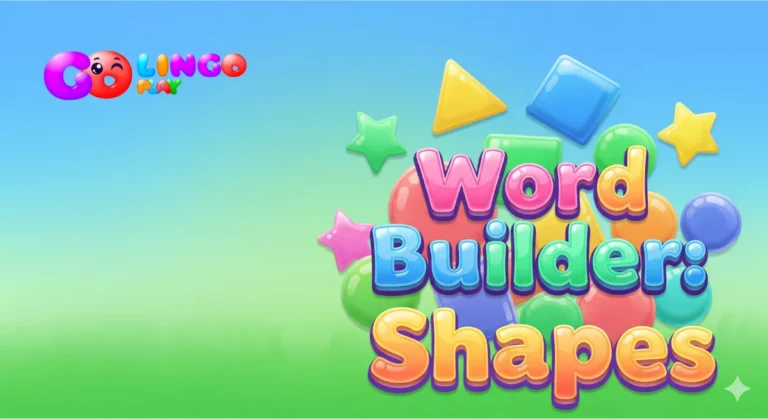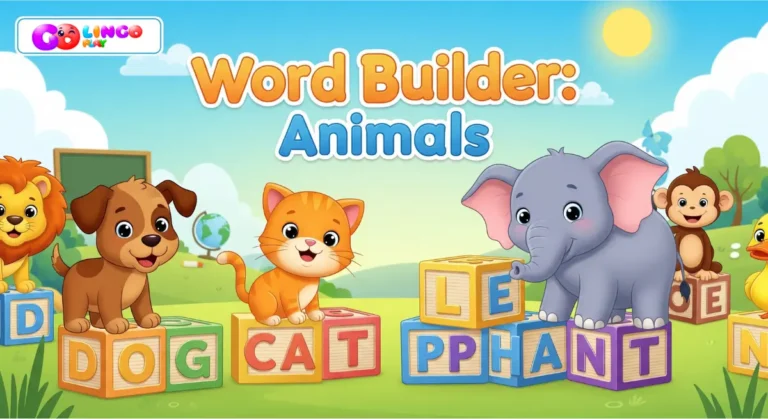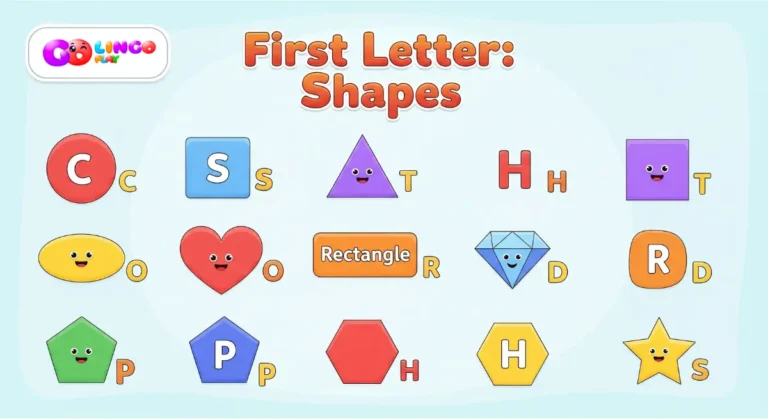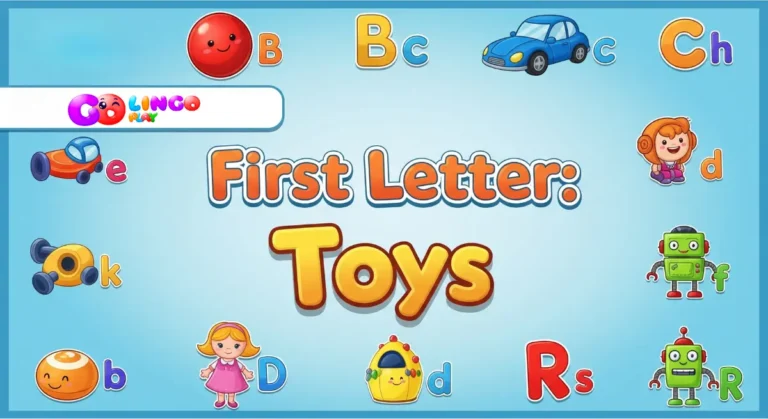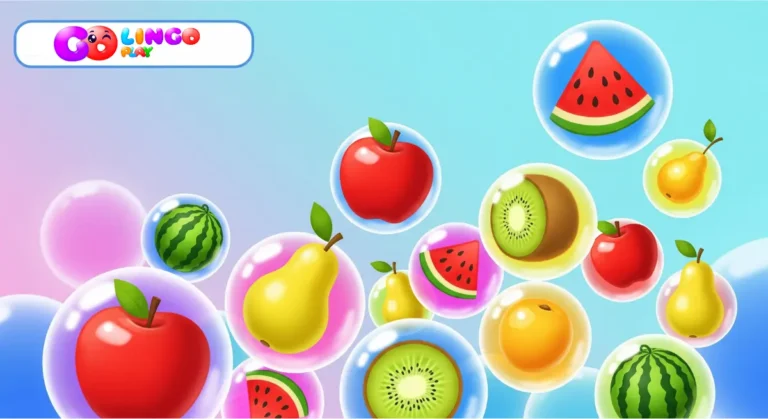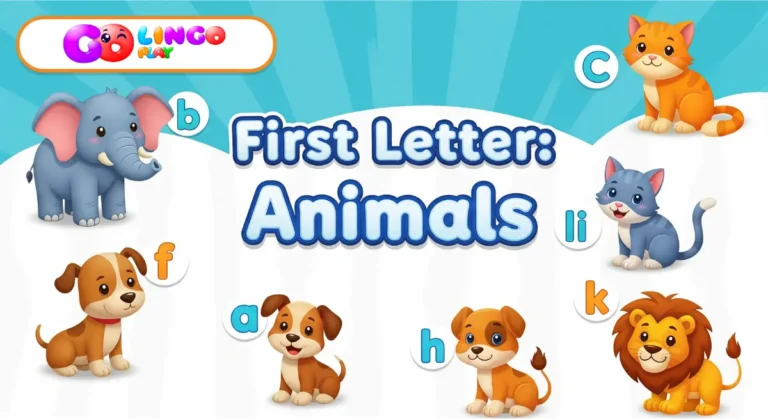Hello, amazing parents and curious kids! Welcome to GoLingoPlay.com, where learning English is always an adventure! Today, we’re going on an exciting journey to explore the building blocks of the English language: the alphabet! Learning the ABCs is the very first step to reading, writing, and speaking English with confidence.
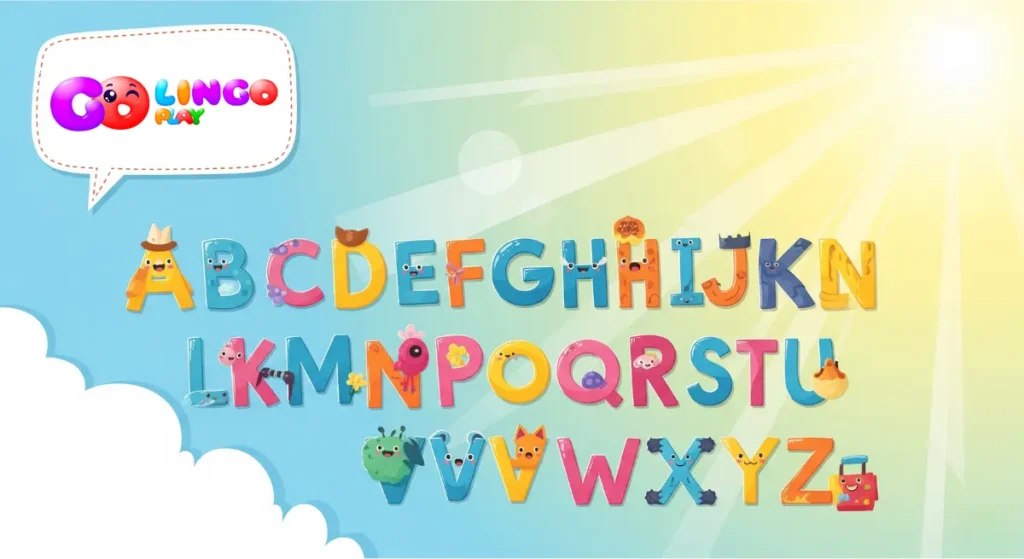
Let’s dive in!
Why is Learning the Alphabet So Important?
Think of the alphabet as 26 special keys that unlock the world of English. Each letter has a shape (how it looks) and a sound (how it’s pronounced). When we know these letters and their sounds, we can start to:
- Read words: By blending the sounds of letters together.
- Write words: By knowing which letters make which sounds.
- Understand English better: Because we can recognize familiar letter patterns.
Meet the English Alphabet: Upper and Lower Case
The English alphabet has 26 letters, and each one has two forms: an uppercase (big letter) and a lowercase (small letter). It’s important to learn both!
- A a
- B b
- C c
- D d
- E e
- F f
- G g
- H h
- I i
- J j
- K k
- L l
- M m
- N n
- O o
- P p
- Q q
- R r
- S s
- T t
- U u
- V v
- W w
- X x
- Y y
- Z z
Pronouncing Each Letter: Listen and Repeat!
Now, let’s learn how to pronounce each letter. Remember, some letters can have more than one sound, but we’ll focus on their most common, basic sounds first.
(At this point, ideally, we would embed an interactive audio player or a video for each letter, allowing kids to hear the sound and repeat. For text, we can describe it.)
- A, a: Sounds like “ay” (as in “apple”).
- B, b: Sounds like “buh” (as in “ball”).
- C, c: Sounds like “kuh” (as in “cat”) or “suh” (as in “city”).
- D, d: Sounds like “duh” (as in “dog”).
- E, e: Sounds like “ee” (as in “egg”).
- F, f: Sounds like “fuh” (as in “fish”).
- G, g: Sounds like “guh” (as in “goat”) or “juh” (as in “giraffe”).
- H, h: Sounds like “huh” (as in “hat”).
- I, i: Sounds like “eye” (as in “igloo”).
- J, j: Sounds like “juh” (as in “juice”).
- K, k: Sounds like “kuh” (as in “kite”).
- L, l: Sounds like “luh” (as in “lion”).
- M, m: Sounds like “muh” (as in “monkey”).
- N, n: Sounds like “nuh” (as in “nose”).
- O, o: Sounds like “oh” (as in “orange”).
- P, p: Sounds like “puh” (as in “pig”).
- Q, q: Sounds like “kwuh” (as in “queen”).
- R, r: Sounds like “ruh” (as in “rabbit”).
- S, s: Sounds like “suh” (as in “sun”) or “zuh” (as in “is”).
- T, t: Sounds like “tuh” (as in “tiger”).
- U, u: Sounds like “uh” (as in “umbrella”).
- V, v: Sounds like “vuh” (as in “van”).
- W, w: Sounds like “wuh” (as in “watch”).
- X, x: Sounds like “ks” (as in “fox”).
- Y, y: Sounds like “yuh” (as in “yo-yo”) or “eye” (as in “sky”).
- Z, z: Sounds like “zuh” (as in “zebra”).
Fun Tips for Parents to Practice Alphabet Pronunciation:
- Sing the ABC Song: This classic song is a fantastic way to memorize the letter names and their order.
- Use Flashcards: Show a letter and ask your child to say its name and sound.
- Point and Say: As you read books, point to the letters and say their names and sounds.
- Play “I Spy”: “I spy with my little eye something that starts with the /b/ sound!”
- Go Lingo Play Games! Head over to our [List of Games] page and find exciting games that focus on letter recognition and phonics, like “Missing Letter” or “Spelling Bee“!
Learning the alphabet is a wonderful first step in your child’s English journey. Remember to keep it fun and positive! We’re so excited to see your little ones explore and grow with GoLingoPlay.com!
Happy learning!

